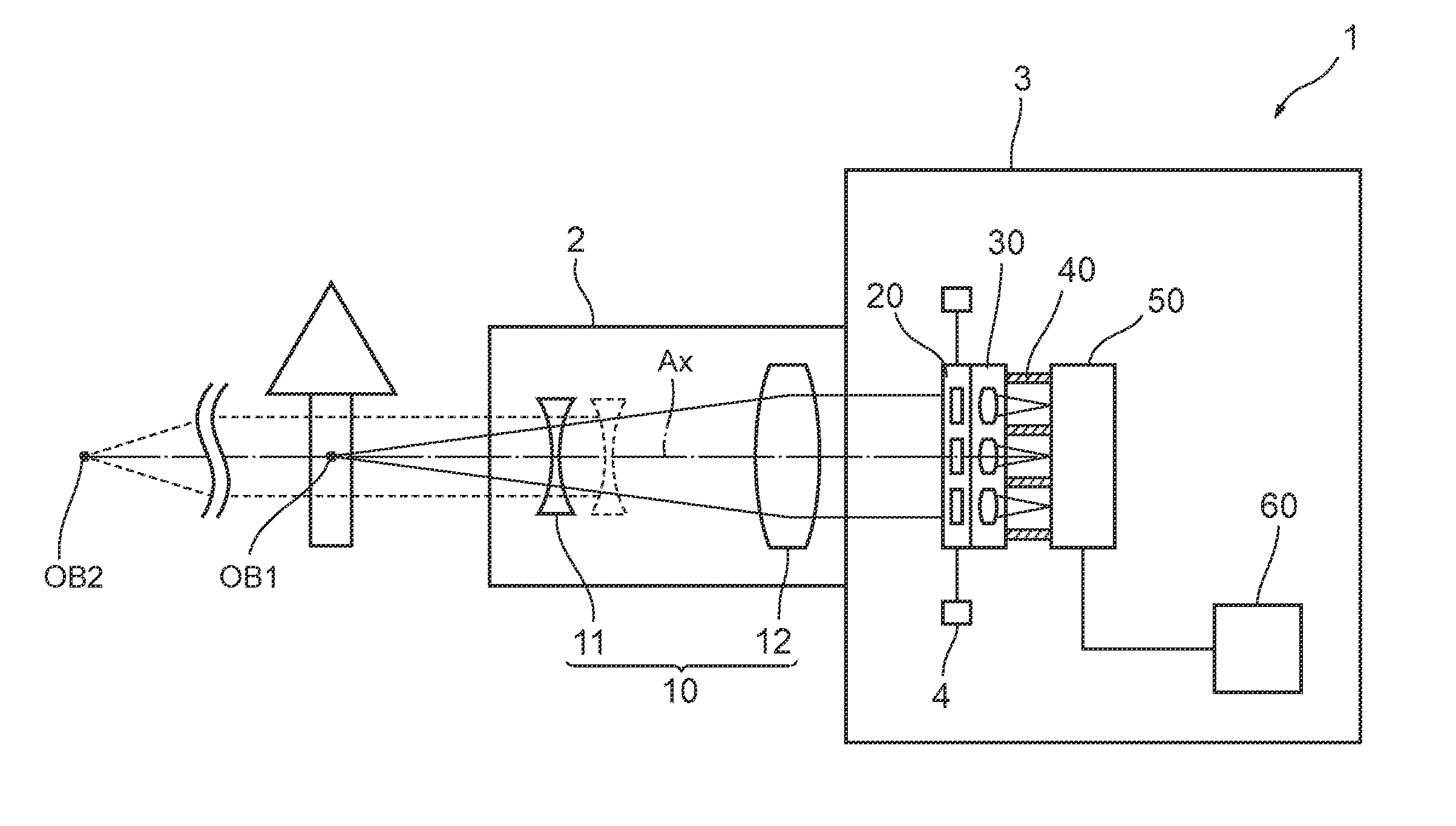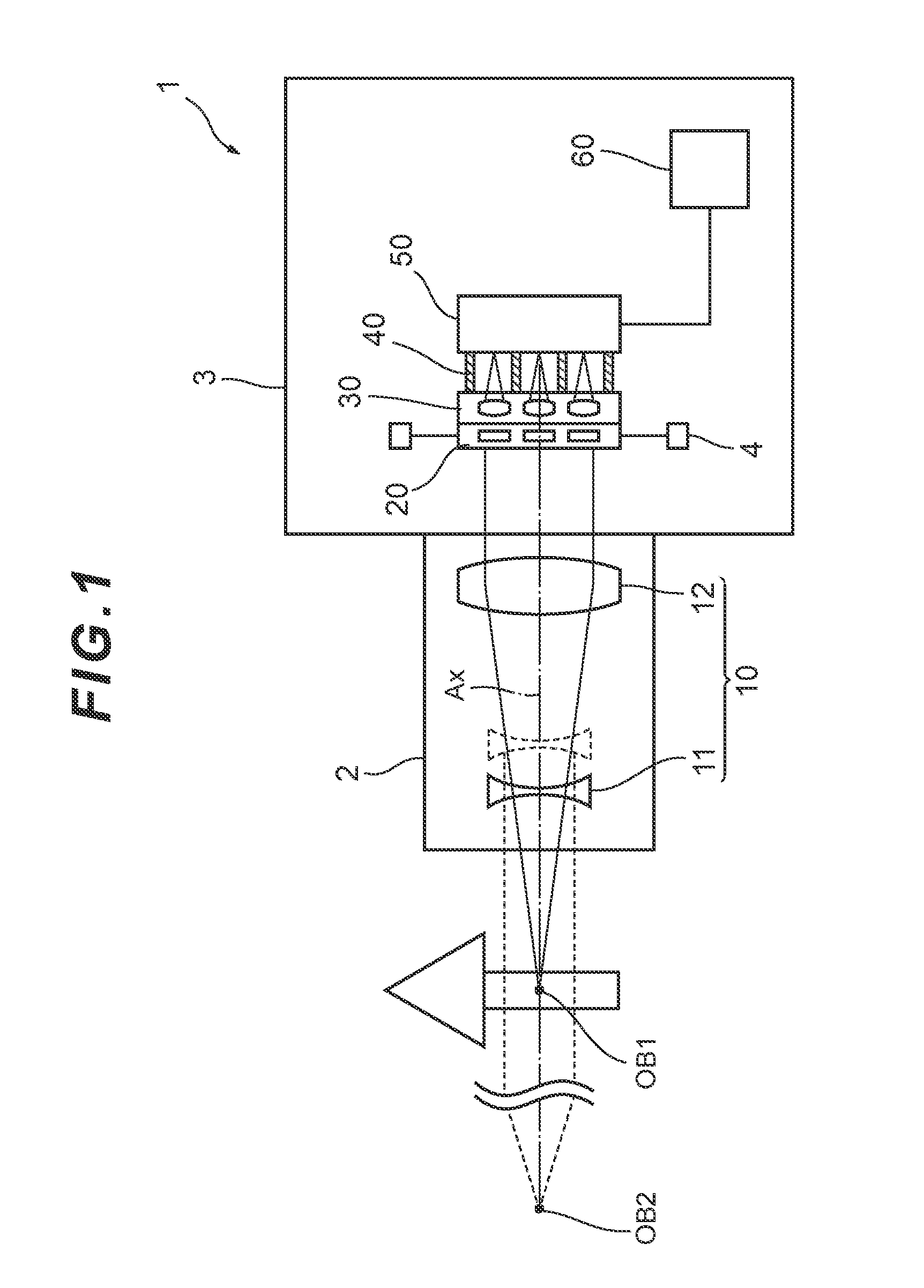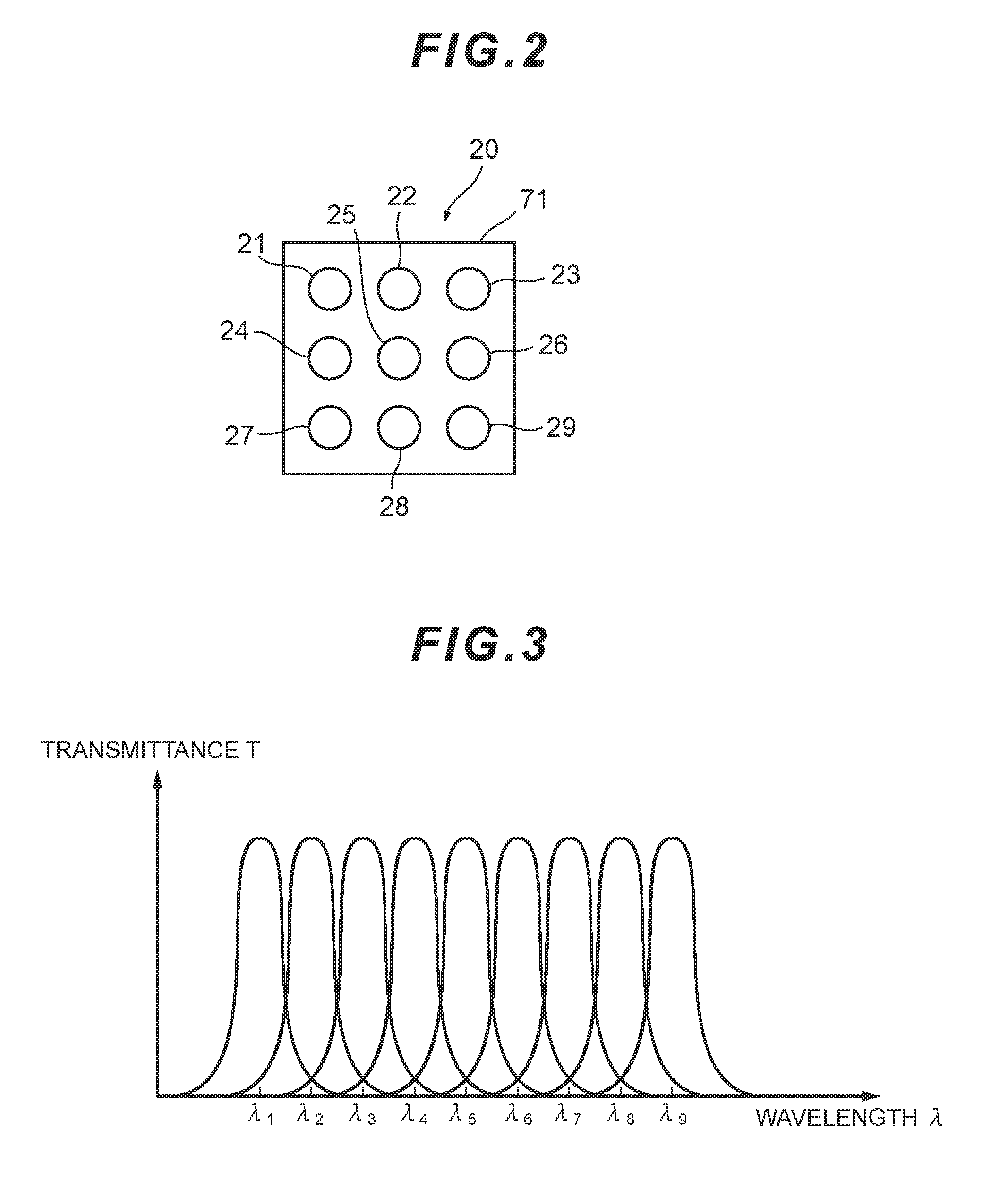Imaging device
a technology of imaging optical system and spectral characteristics, which is applied in the direction of optical radiation measurement, camera filters, instruments, etc., can solve the problems of difficult to provide an independent focal adjustment mechanism for the individual imaging optical system, difficult to change the spectral characteristics, and lack of flexibility in techniques, so as to reduce the load of image processing
- Summary
- Abstract
- Description
- Claims
- Application Information
AI Technical Summary
Benefits of technology
Problems solved by technology
Method used
Image
Examples
embodiment 1
[0058]In the imaging device 1 of Embodiment 1, an object at a finite distance OB1 or an object at infinity OB2 is focused by moving the first lens group 11 along the optical axis Ax using a lens drive device (not illustrated). An operation when the object at a finite distance OB1 is focused will be described. The operation in the case when the object at infinity OB2 is focused is the same as the case when the object at a finite distance OB1 is focused, therefore description thereof is omitted.
[0059]Luminous flux from the focused object at a finite distance OB1 transmits through the first lens group 11 and the second lens group 12, and is collimated into a parallel luminous flux when emitted from the second lens group 12. The parallel luminous flux emitted from the front optical system 10 passes one of the first spectral filter 21 to the ninth spectral filter 29 of the spectral filter array 20, and reaches the small lens array 30. Each of the first small lens 31 to the ninth small le...
embodiment 2
[0077]In the imaging device 101 of Embodiment 2, an object at a finite distance OB1 or an object at infinity OB2 is focused by moving the first lens group 111 by a lens drive device (not illustrated) along the optical axis Ax. An operation when the object at a finite distance OB1 is focused will be described. The operation in the case of focusing on the object at infinity OB2 is the same as the case of focusing on the object at a finite distance OB1, therefore description thereof is omitted.
[0078]The luminous flux from the focused object at a finite distance OB1 transmits through the first lens group 111 and the second lens group 112, and becomes parallel luminous flux when emitted from the second lens group 112. The parallel luminous flux emitted from the front optical system 10 passes one of the first spectral filter 21 to the ninth spectral filter 29 of the spectral filter array 20 and reaches the small lens array 30. Each of the first small lens 31 to the ninth small lens 39 of ...
embodiment 4
[0119]Table 1 shows the lens data of the imaging optical system 340A of In the lens data in Table 1, the surface number indicates a sequential number of each lens surface counted from the object side, R denotes the radius of curvature of each lens surface, D denotes a distance from each lens surface to the next lens surface, E denotes an effective diameter of each lens surface, nd denotes a refractive index at the d-line (wavelength λ: 587.6 nm), and νd denotes an Abbe number at the d-line (wavelength λ: 587.6 nm). The radius of curvature R=∞ indicates a plane, and the refractive index of air nd=1.0000 is omitted. The units of the radius of curvature R, the surface distance D and the effective diameter E are “mm”. Each radius of curvature R of surface 1 to surface 10 in Table 1 corresponds to each symbol R1 to R10 assigned to surface 1 to surface 10 as shown in FIG. 20.
[0120]
TABLE 1SurfacenumberRDEndvd1∞1.004.01.516863.9 (spectral filter)2∞14.004.03∞1.004.01.516863.94∞0.014.01.6(Ad...
PUM
 Login to View More
Login to View More Abstract
Description
Claims
Application Information
 Login to View More
Login to View More - R&D
- Intellectual Property
- Life Sciences
- Materials
- Tech Scout
- Unparalleled Data Quality
- Higher Quality Content
- 60% Fewer Hallucinations
Browse by: Latest US Patents, China's latest patents, Technical Efficacy Thesaurus, Application Domain, Technology Topic, Popular Technical Reports.
© 2025 PatSnap. All rights reserved.Legal|Privacy policy|Modern Slavery Act Transparency Statement|Sitemap|About US| Contact US: help@patsnap.com



